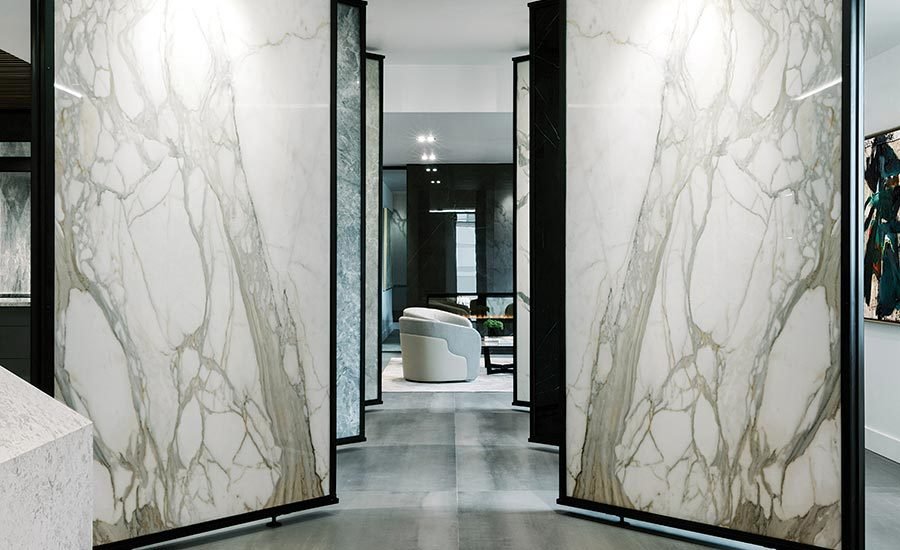Porcelain Slabs vs. Natural Stone: A Deep Dive into Durability, Aesthetics, and Cost
Introduction
In the dynamic world of architectural and interior design, the choice of materials not only defines the aesthetic but also the functionality and longevity of a space. Stone Gallery, a pioneer in the realm of high-quality stone solutions in Sydney, Australia, offers an expert comparison between the two revered materials: porcelain slabs and natural stones like granite, marble, and quartzite.
Durability and Maintenance
Porcelain Slabs
Porcelain slabs, celebrated for their robustness, resist common damages such as chipping, scratching, or cracking. This resilience is a boon in high-traffic areas, ensuring longevity. Maintenance-wise, these slabs are a homeowner’s dream, requiring minimal upkeep with no need for periodic sealing or special cleaning agents.
Natural Stones
In contrast, natural stones, while exuding a timeless charm, demand more attentive care. Granite, although hardy, necessitates regular sealing to fend off stains. Marble, with its luxurious allure, is prone to etching and requires frequent attention to maintain its pristine appearance. Quartzite strikes a balance with its hardiness, yet it doesn't completely escape the need for occasional upkeep.

Aesthetic Appeal
Porcelain Slabs
In terms of design versatility, porcelain is a chameleon. Modern manufacturing allows these slabs to emulate the appearance of natural stones, wood, fabric, and even metal, offering an array of design possibilities. This ability to adapt to various design themes makes porcelain a popular choice among contemporary designers.
Natural Stones
On the other hand, the inherent beauty of natural stones like granite, marble, and quartzite lies in their uniqueness. Each slab tells a different story through its veins and hues, bringing an element of nature and exclusivity to any space. This irreplaceable aspect makes natural stones a symbol of luxury and sophistication.
Cost Considerations
Porcelain Slabs
Porcelain slabs typically present a more economical option, both in terms of initial purchase and long-term maintenance. This cost-effectiveness, coupled with their durability, makes them an attractive choice for large-scale projects and residential spaces alike.
Natural Stones
Natural stones, however, are often seen as a premium choice. The cost varies significantly based on the type, rarity, and origin of the stone. Additionally, the installation and ongoing maintenance can add to the overall investment.
Environmental Impact
Porcelain Slabs

Porcelain's manufacturing process is generally more energy-intensive than that of natural stone. However, its long lifespan and low maintenance needs somewhat balance this aspect, making it a sustainable choice in the long run.
Natural Stones
Natural stone, being a product of nature, has a lower initial environmental footprint. However, quarrying and transportation processes do add to its ecological impact. The sustainability of natural stone largely depends on the practices of the quarry and the distance it travels to reach the consumer.
Applications in Modern Architecture
Porcelain slabs and natural stones each find their niche in architectural and design applications. Porcelain, with its adaptability, is a go-to for projects requiring uniformity and consistency, such as large flooring areas or commercial spaces. Natural stones, with their inherent luxury, are often the choice for statement pieces, countertops, and areas where design takes precedence over cost.
Conclusion
Selecting between porcelain slabs and natural stones hinges on various factors, including project requirements, budget, and aesthetic preferences. Stone Gallery, leveraging its extensive expertise in tiling and manufacturing, stands ready to guide architects, builders, and homeowners in making the right choice for their unique spaces.
FAQ
Which is more suitable for high-traffic areas, porcelain slabs or natural stone?
Porcelain slabs, owing to their high durability and easy maintenance, are generally more suitable for high-traffic areas.
How does the environmental impact of porcelain compare to natural stone?
Porcelain has a higher initial environmental impact due to its manufacturing process, but its durability and low maintenance needs can make it a sustainable option in the long term.
Can natural stone be used in exterior applications?
Yes, certain types of natural stone are suitable for exterior applications, but they require proper sealing and maintenance to withstand outdoor conditions.
